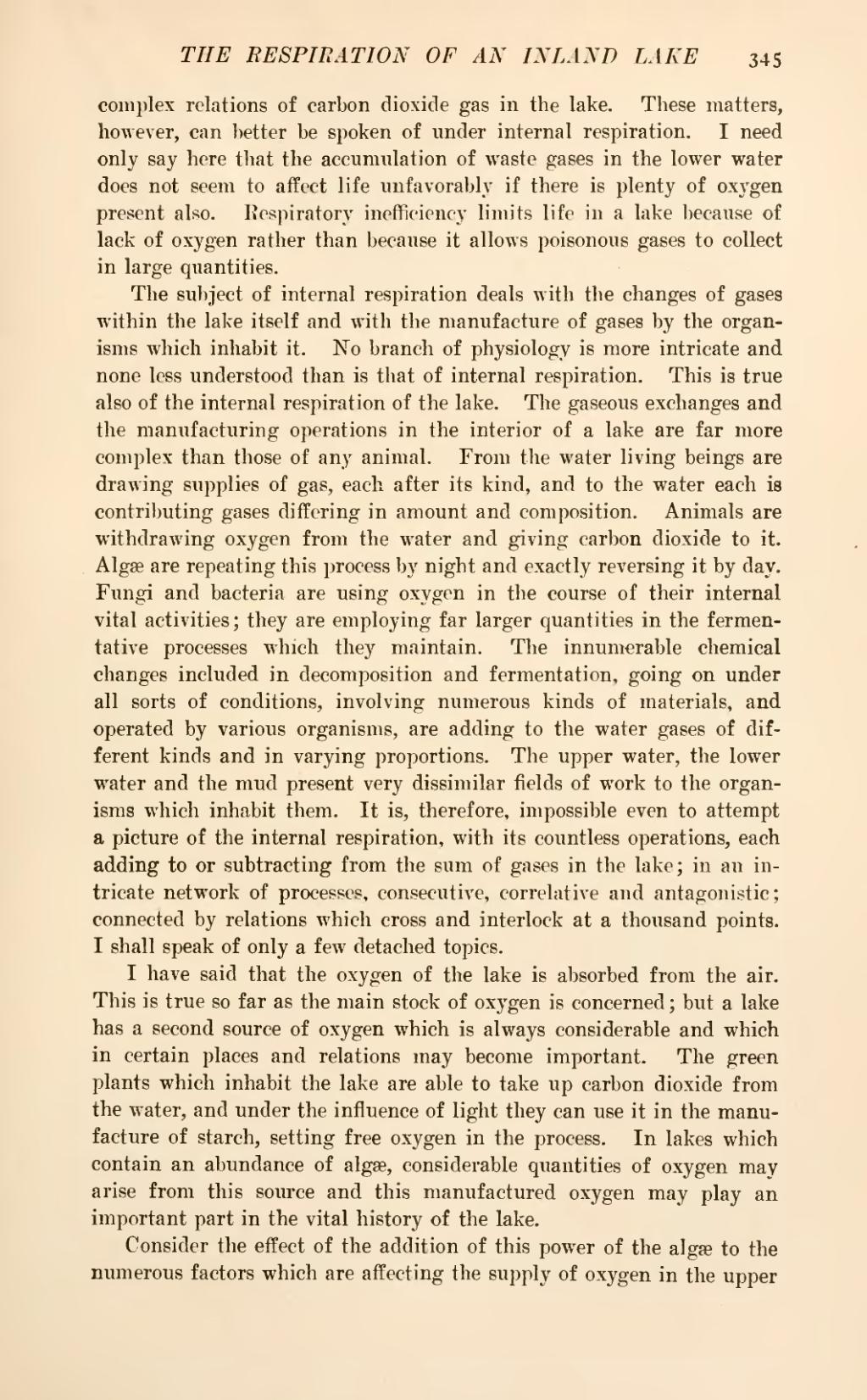complex relations of carbon dioxide gas in the lake. These matters, however, can better be spoken of under internal respiration. I need only say here that the accumulation of waste gases in the lower water does not seem to affect life unfavorably if there is plenty of oxygen present also. Respiratory inefficiency limits life in a lake because of lack of oxygen rather than because it allows poisonous gases to collect in large quantities.
The subject of internal respiration deals with the changes of gases within the lake itself and with the manufacture of gases by the organisms which inhabit it. No branch of physiology is more intricate and none less understood than is that of internal respiration. This is true also of the internal respiration of the lake. The gaseous exchanges and the manufacturing operations in the interior of a lake are far more complex than those of any animal. From the water living beings are drawing supplies of gas, each after its kind, and to the water each is contributing gases differing in amount and composition. Animals are withdrawing oxygen from the water and giving carbon dioxide to it. Algæ are repeating this process by night and exactly reversing it by day. Fungi and bacteria are using oxygen in the course of their internal vital activities; they are employing far larger quantities in the fermentative processes which they maintain. The innumerable chemical changes included in decomposition and fermentation, going on under all sorts of conditions, involving numerous kinds of materials, and operated by various organisms, are adding to the water gases of different kinds and in varying proportions. The upper water, the lower water and the mud present very dissimilar fields of work to the organisms which inhabit them. It is, therefore, impossible even to attempt a picture of the internal respiration, with its countless operations, each adding to or subtracting from the sum of gases in the lake; in an intricate network of processes, consecutive, correlative and antagonistic; connected by relations which cross and interlock at a thousand points. I shall speak of only a few detached topics.
I have said that the oxygen of the lake is absorbed from the air. This is true so far as the main stock of oxygen is concerned; but a lake has a second source of oxygen which is always considerable and which in certain places and relations may become important. The green plants which inhabit the lake are able to take up carbon dioxide from the water, and under the influence of light they can use it in the manufacture of starch, setting free oxygen in the process. In lakes which contain an abundance of algæ, considerable quantities of oxygen may arise from this source and this manufactured oxygen may play an important part in the vital history of the lake.
Consider the effect of the addition of this power of the algaæ to the numerous factors which are affecting the supply of oxygen in the upper
